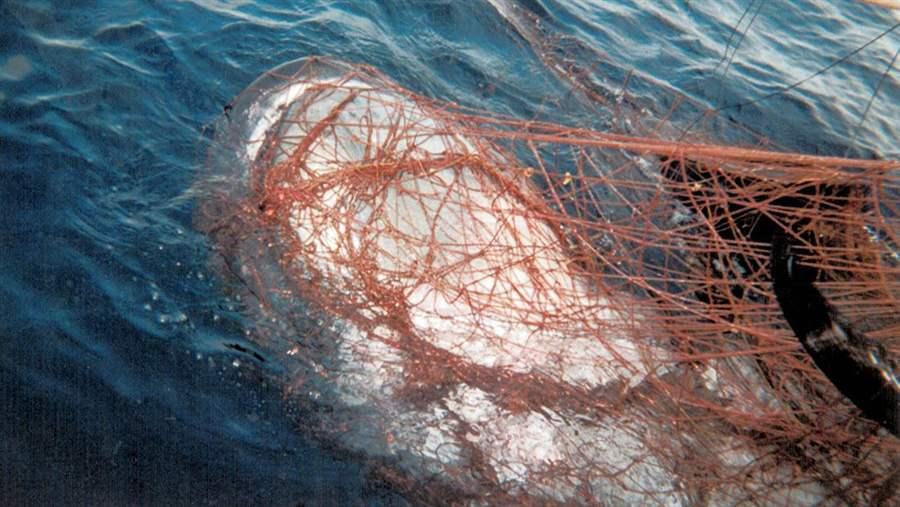California Senators Offer New Approach to Long-Standing Fisheries Problem
Proposal would help swordfish fleet shift to new gear that reduces bycatch

A megamouth shark is entangled in a drift gillnet off the California coast. Photographs by federal fisheries observers document cases of marine animals unintentionally caught in the nets targeting swordfish.
National Oceanic and Atmospheric AdministrationMany of the marine mammals that thrill wildlife watchers along California’s coast—from breaching whales to dolphins surfing waves—have for years faced an unnecessary threat: the only remaining commercial swordfish fleet in the nation using large-mesh drift gillnets.
Drift gillnets are indiscriminate and destructive. More than 60 percent of the species caught by the swordfish fleet are discarded because they are not marketable, according to data from the National Oceanic and Atmospheric Administration's Fisheries Service. That’s why large-mesh drift gillnets have been banned everywhere in the U.S. except in federal waters off of California and Oregon.
So it’s particularly heartening to see California Senator Dianne Feinstein (D) leading the effort to correct this disparity. On April 26, Sen. Feinstein introduced legislation that would transition the commercial drift gillnet fleet to less destructive fishing gear by 2020. The bill, cosponsored by California Senator Kamala Harris (D) and West Virginia Senator Shelley Moore Capito (R), includes a provision to help fishermen make the switch.
Sen. Feinstein’s effort has the overwhelming support of her constituents, with 86 percent of California voters saying they favor ending the use of drift gillnets, according to a 2016 poll commissioned by The Pew Charitable Trusts. Fortunately, fishermen have a viable alternative to drift gillnets for catching swordfish: deep-set buoy gear, which has proven effective in reducing bycatch during years of research and testing.
This approach uses a hook-and-buoy system that enables fishermen to drop their hooks as deep as 1,200 feet to reach swordfish where they typically feed during the day. When a bite-indicator buoy is triggered fishermen can respond within minutes to either land the fish or, if it’s not a swordfish or other salable species, release it alive.
The gear has proved so effective that numerous swordfish fishermen have asked the Pacific Fishery Management Council for special permits to use this innovative equipment even before it is fully authorized. Ending the use of drift gillnets became more urgent last year when NOAA Fisheries reversed its decision to limit the numbers of marine mammals and sea turtles the nets can kill, commonly called “hard caps.”
Passing this visionary legislation will not be easy. But I hope that this commonsense and bipartisan bill passes, and provides the momentum needed to end the use of drift gillnets. It’s the best way of preserving the viable commercial swordfishing industry without unnecessary harm to the marine wildlife that is integral to a healthy Pacific Ocean ecosystem.
Paul Shively directs ocean conservation work in the Pacific for The Pew Charitable Trusts.






